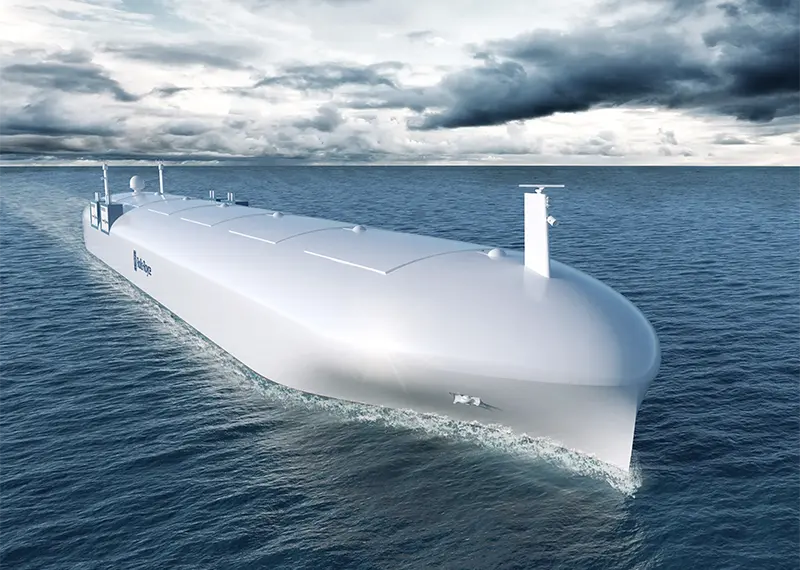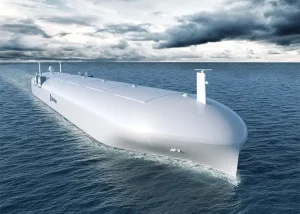Defining Autonomous Shipping
Autonomous shipping represents a transformative leap in the maritime industry, promising enhanced operational efficiency, reduced human error, and significant cost savings. As this emerging technology advances, the International Maritime Organization (IMO) has taken a proactive role in developing regulations to ensure the safe, secure, and environmentally responsible deployment of unmanned vessels. This article examines the IMO’s latest updates on autonomous shipping, exploring regulatory frameworks, industry implications, and the future of maritime automation.
Autonomous shipping involves vessels operating with varying degrees of automation, from remote control to full autonomy without onboard crew. These vessels, also known as Maritime Autonomous Surface Ships (MASS), are categorized based on their operational control levels:
- Degree 1: Human-Assisted Automation: The crew manages operations but relies on automated systems for specific tasks.
- Degree 2: Remote-Controlled Ships with Crew Onboard: Ships can be operated remotely, but crew members remain onboard.
- Degree 3: Fully Remote-Controlled Ships: The entire ship operates remotely without onboard crew.
- Degree 4: Fully Autonomous Ships: Ships operate independently, making decisions without human intervention.
IMO’s Regulatory Framework for Autonomous Ships
The IMO has launched a multi-phase regulatory initiative to address the challenges and opportunities of autonomous shipping. These efforts aim to establish a comprehensive legal and operational framework for integrating MASS into the global maritime system.
1. Regulatory Scoping Exercise (RSE)
The IMO’s Maritime Safety Committee (MSC) conducted a Regulatory Scoping Exercise (RSE) from 2018 to 2021. The RSE evaluated existing IMO conventions and identified areas requiring updates to accommodate MASS. Key treaties reviewed include:
- Safety of Life at Sea (SOLAS): Examined for safety management and onboard operational standards.
- Collision Regulations (COLREGs): Assessed for navigation rules concerning autonomous vessels.
- Standards of Training, Certification, and Watchkeeping (STCW): Reviewed for potential revisions in crew training.
The RSE concluded that while several IMO conventions apply to autonomous shipping, adjustments are necessary to clarify roles, responsibilities, and compliance mechanisms.
2. Development of a MASS Code
Building on the RSE findings, the IMO is developing a mandatory code for MASS, covering critical areas such as:
- Safety Standards: Technical requirements for ship design, navigation, and emergency response.
- Operational Guidelines: Defining responsibilities for remote operators and onboard crews (if present).
- Cybersecurity Measures: Ensuring robust protection against potential cyber threats.
- Environmental Compliance: Meeting emissions reduction targets and minimizing pollution risks.
The expected adoption of the MASS Code by 2025 will provide a clear regulatory pathway for the global deployment of autonomous ships.
Global Industry Implications and Challenges in Autonomous Shipping
The International Maritime Organization (IMO) plays a pivotal role in shaping the future of autonomous shipping, influencing multiple aspects of the maritime industry while addressing its inherent challenges. Below is an integrated exploration of the IMO’s regulatory initiatives, industry implications, and responses to key challenges:
Industry Implications of IMO Regulatory Initiatives
The IMO’s policies on autonomous shipping have a transformative impact on the maritime industry, driving innovation, adaptation, and operational changes across key stakeholders:
- Shipping Companies : Autonomous technologies are encouraged as a means of reducing operational costs and enhancing efficiency. Companies are prompted to invest in advanced systems, such as remote operations and automation.
- Maritime Training Institutions: These institutions must adapt curricula to equip future seafarers, remote operators, and technicians with skills aligned with the operational demands of Maritime Autonomous Surface Ships (MASS).
- Shipbuilders and Technology Developers: The push for automation, sensor integration, and system interoperability spurs innovation. Manufacturers are tasked with developing cutting-edge solutions that meet IMO standards for safety and efficiency.
Key Challenges and IMO Responses
While autonomous shipping offers significant potential, it introduces complex challenges requiring regulatory and operational adjustments. The IMO addresses these through targeted initiatives:
- Legal Liability and Accountability
- Challenge: Determining legal responsibility in accidents involving autonomous ships.
- IMO Response: Clear definitions are established for shipowner, operator, and remote controller responsibilities within the legal framework.
- Collision Avoidance and Navigation Rules
- Challenge: Ensuring autonomous ships comply with traditional maritime navigation rules.
- IMO Response: Revisions to the Convention on the International Regulations for Preventing Collisions at Sea (COLREGs) include provisions for autonomous navigation and the development of anti-collision algorithms.
- Cybersecurity Risks
- Challenge: Protecting ships from cyberattacks that could compromise navigation or operational systems.
- IMO Response: The IMO introduces cybersecurity guidelines under the International Safety Management (ISM) Code, emphasizing robust protection measures for automated systems.
- Crew Training and Certification
- Challenge: Training remote operators and adapting certification standards for autonomous vessel management.
- IMO Response: Updates to the Standards of Training, Certification, and Watchkeeping for Seafarers (STCW) Convention include specialized training modules tailored to MASS operations.
The IMO’s regulatory initiatives provide a structured pathway for integrating autonomous technologies into the maritime industry while addressing critical challenges. These efforts aim to balance innovation with safety, security, and operational efficiency, ensuring the successful adoption of autonomous shipping across global markets.
Technological Innovations Driving Autonomous Shipping
The evolution of autonomous shipping is propelled by groundbreaking technological advancements, revolutionizing maritime operations and enabling safer, more efficient, and sustainable practices. Below are the key technologies shaping this transformative shift:
Artificial Intelligence (AI)
AI-powered systems are the backbone of autonomous shipping, enabling advanced decision-making capabilities. These systems optimize navigation, enhance route planning, and support predictive maintenance by analyzing vast amounts of real-time data. AI algorithms are designed to learn and adapt, ensuring efficient responses to dynamic maritime conditions, such as weather changes or unexpected obstacles.
Advanced Sensors and Radar
Sophisticated sensing technologies like LiDAR, sonar, and radar provide ships with real-time situational awareness. These systems detect and identify nearby vessels, obstacles, and environmental conditions, ensuring safe navigation and collision avoidance. Coupled with onboard cameras and thermal imaging, they create a comprehensive understanding of the ship’s surroundings.
Data Connectivity and Satellite Communications
Reliable and high-speed communication networks, including satellite-based systems, are critical for the remote operation and monitoring of autonomous vessels. These technologies enable seamless data exchange between the ship and shore-based control centers, ensuring precise coordination and rapid response to emergencies.
Autonomous Control Systems
Integrated control platforms coordinate all onboard systems, from propulsion to cargo management. These systems execute complex operational tasks autonomously, such as dynamic positioning, docking, and navigation in congested waters. They leverage inputs from AI and advanced sensors to ensure optimal performance.
–
Real-World Examples and Case Studies in Autonomous Shipping
Autonomous shipping technologies are no longer theoretical; they are being tested and implemented across the globe, showcasing the transformative potential of innovation in the maritime sector. Below are key examples and success stories that highlight the progress made:
The “Yara Birkeland” – A Pioneering Milestone
The Yara Birkeland, the world’s first fully electric and autonomous container ship, exemplifies the integration of cutting-edge technologies. This vessel completed its maiden voyage in 2021, utilizing AI-driven control systems and advanced sensors for navigation, cargo management, and docking. Robust satellite communication enables remote monitoring and control, ensuring efficient and reliable operations. As a trailblazer, the Yara Birkeland has set a benchmark for future autonomous vessels, demonstrating how technological innovation can revolutionize maritime logistics. Beyond its technological achievements, the Yara Birkeland aligns with global sustainability goals by reducing emissions and enhancing operational efficiency, redefining traditional maritime practices.
Case Studies of Autonomous Shipping Trials
Innovative trials and implementations by industry leaders further illustrate the potential of autonomous shipping:
- Rolls-Royce and Finferries
In Finland, Rolls-Royce and Finferries successfully tested an autonomous ferry equipped with AI systems and sensor integration, achieving collision-free navigation in challenging maritime conditions. This trial demonstrated the reliability of autonomous systems for short-distance operations. - Ocean Infinity
Ocean Infinity has revolutionized oceanographic research and offshore energy exploration through its fleet of autonomous underwater survey vessels. These vessels operate with minimal human intervention, delivering precise data collection and improving operational efficiency. - Nippon Yusen Kaisha (NYK Line)
NYK Line has conducted transoceanic autonomous voyages, showcasing the viability of long-distance operations. By leveraging advanced navigation systems and AI, these trials highlight the potential for reducing human error and enhancing safety over extended routes.
Future Prospects and Recommendations
As autonomous shipping evolves, the IMO’s continued leadership will be critical in shaping its global adoption. Key recommendations for the future include:
- Accelerated Regulatory Development: Ensuring timely implementation of the MASS Code to facilitate industry adoption.
- Public-Private Partnerships: Encouraging collaborative projects between regulators, tech companies, and shipping lines.
- Global Standards Harmonization: Promoting consistent regulations across international jurisdictions.
- Research and Development Support: Funding research into emerging technologies like autonomous tugs, supply drones, and AI-enhanced navigation.
Autonomous shipping is redefining the maritime landscape, offering unparalleled efficiency, safety, and environmental benefits. Through its regulatory initiatives, the IMO is setting the stage for a global maritime future powered by cutting-edge automation. As the industry embraces these innovations, a well-defined legal and operational framework will ensure that autonomous ships operate safely, sustainably, and seamlessly across international waters.





“This article is really informative and well-written!”
I’m often to blogging and i really appreciate your content. The article has actually peaks my interest. I’m going to bookmark your web site and maintain checking for brand spanking new information.